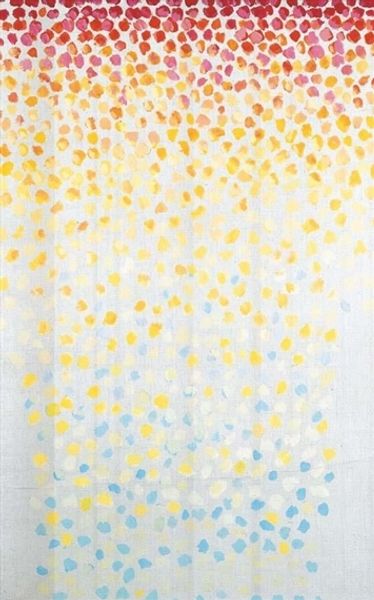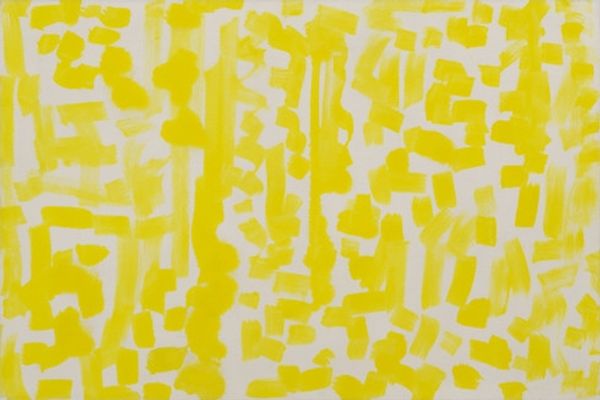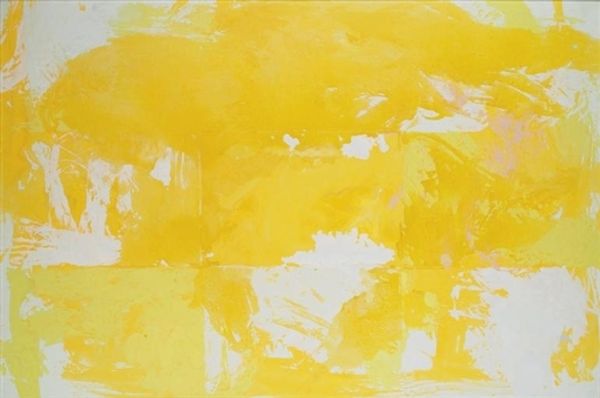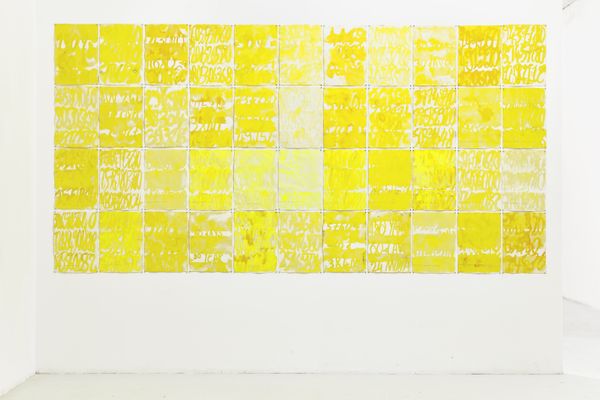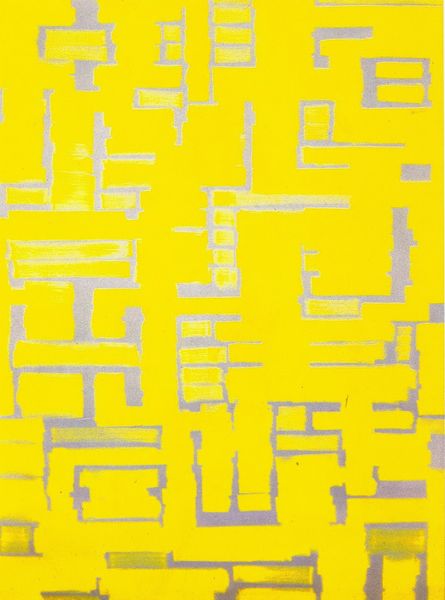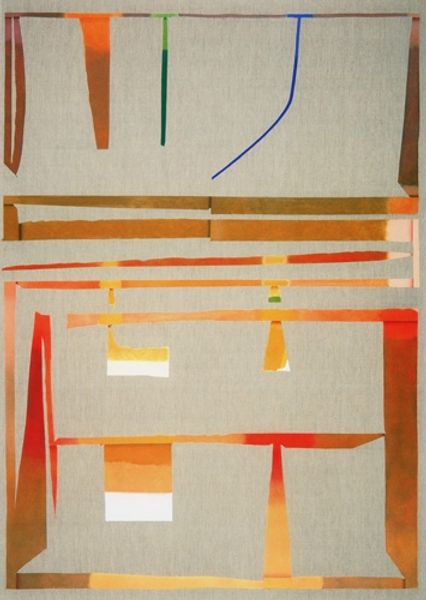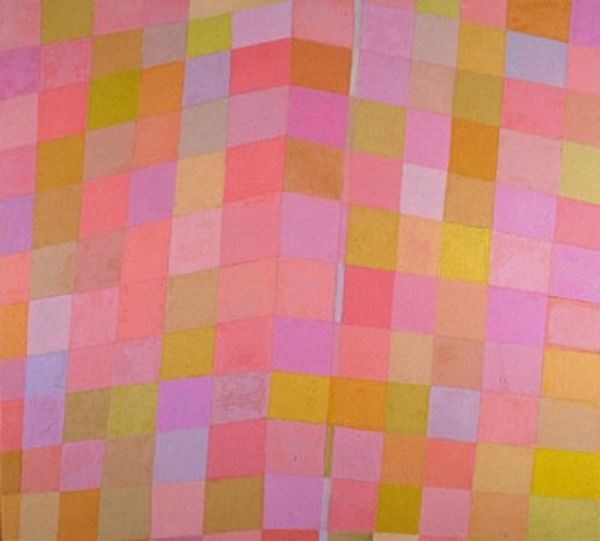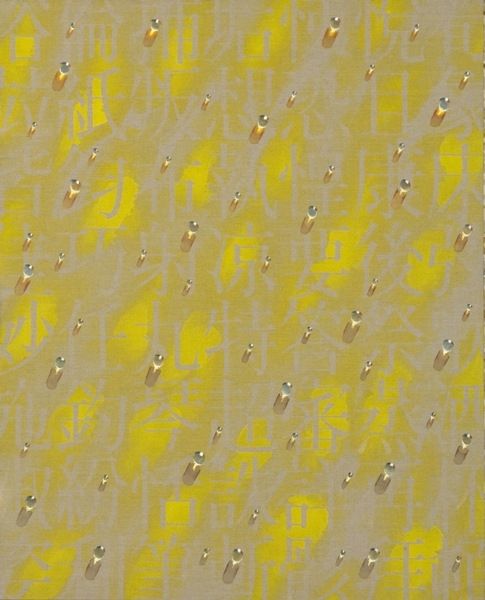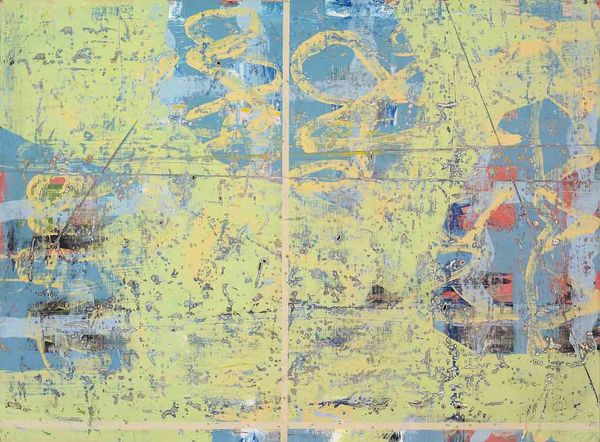
painting, watercolor
#
abstract painting
#
water colours
#
painting
#
postmodernism
#
pattern
#
watercolor
#
abstract pattern
#
geometric
#
geometric-abstraction
#
abstraction
#
line
#
modernism
#
watercolor
Copyright: Tihamer Gyarmathy,Fair Use
Curator: Tihamer Gyarmathy’s "Spatial Structure" from 1984 presents us with a fascinating array of geometric abstraction, executed in delicate watercolors. Editor: It has a quiet cheerfulness to it, doesn't it? The squares and circles, awash in yellows, overlaid on grids that peek through, almost like faded graph paper. It feels like a child's optimistic vision of city planning, innocent and playful. Curator: Absolutely, that layering effect feels significant. Geometric shapes, in their symbolic nature, often carry weighty implications about order and structure, and it also shows how modern art redefines or re-orients these common shapes. The yellow suggests enlightenment. Perhaps the squares imply limitations on structure versus more boundless possibility within the circles. Editor: Watercolor...it’s interesting how Gyarmathy chose such a transient medium for such a seemingly stable subject, such as spatial construction. Watercolor tends to act and perform more organically due to gravity, flow of medium and it is notoriously unforgiving. Each element, seemingly precisely positioned, speaks to hours of process—a study in controlled chance. Curator: It's the vulnerability of the medium contrasting with the stability implied by the geometric form that creates such dynamism here, that liminal space that echoes within the visual language of Postmodernism that was popular at this time. It challenges the clean lines of high modernism. There is also a great deal of subtle mirroring of elements and this use of symmetry creates a comforting rhythm throughout the composition. Editor: The texture, built from repetitive markings, emphasizes human labor as an essential feature, rather than shying away from visibility, suggesting something closer to textiles or printmaking traditions—art from humble beginnings rather than academic mastery. Curator: This contrast creates the visual tension in "Spatial Structure"—a conversation, even, between rigid control and artistic intent to allow that natural character, but through shape and form it communicates beyond pure aesthetics. Editor: Yes, in examining how "Spatial Structure" was assembled, through his choices in technique and medium, it forces us to look at the bigger, historical structures too. Curator: Indeed, it’s a work that continues to unfold new patterns of thought and visual connections upon each viewing.
Comments
No comments
Be the first to comment and join the conversation on the ultimate creative platform.
